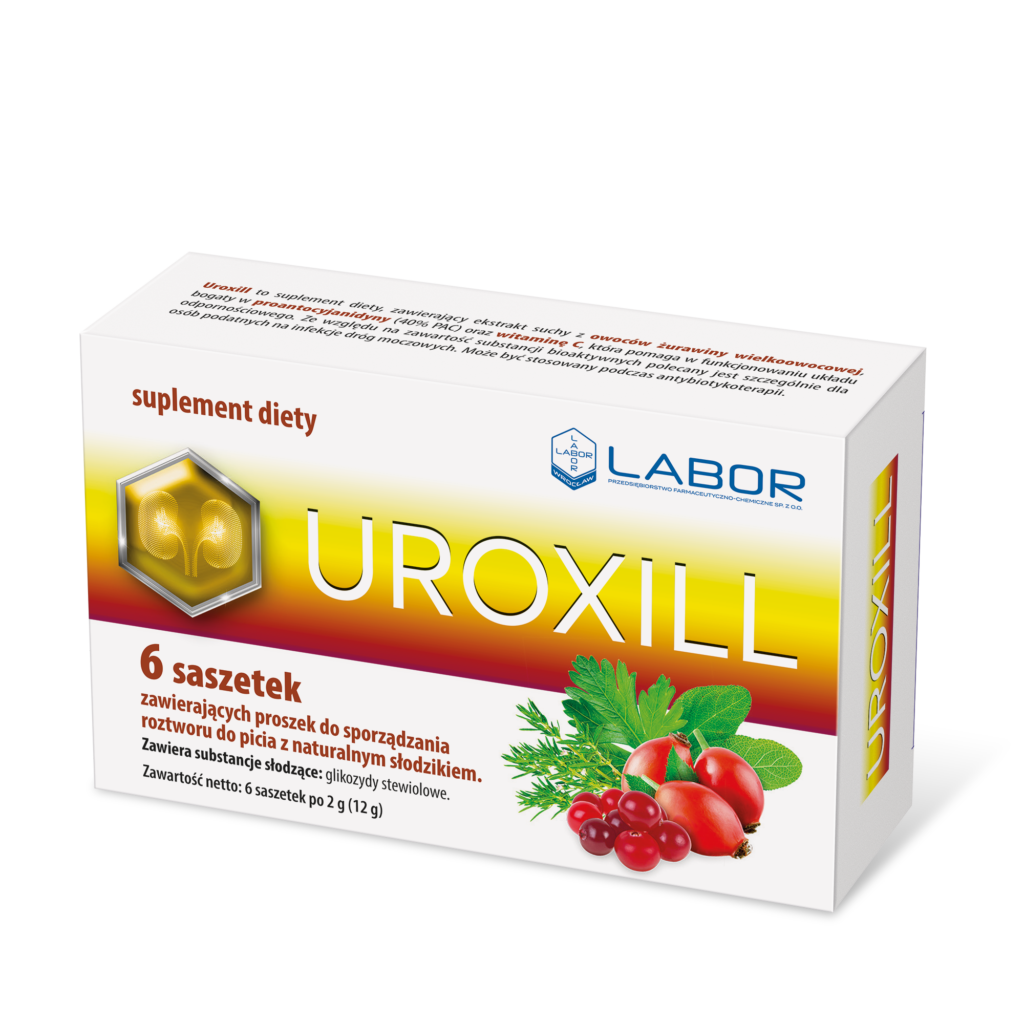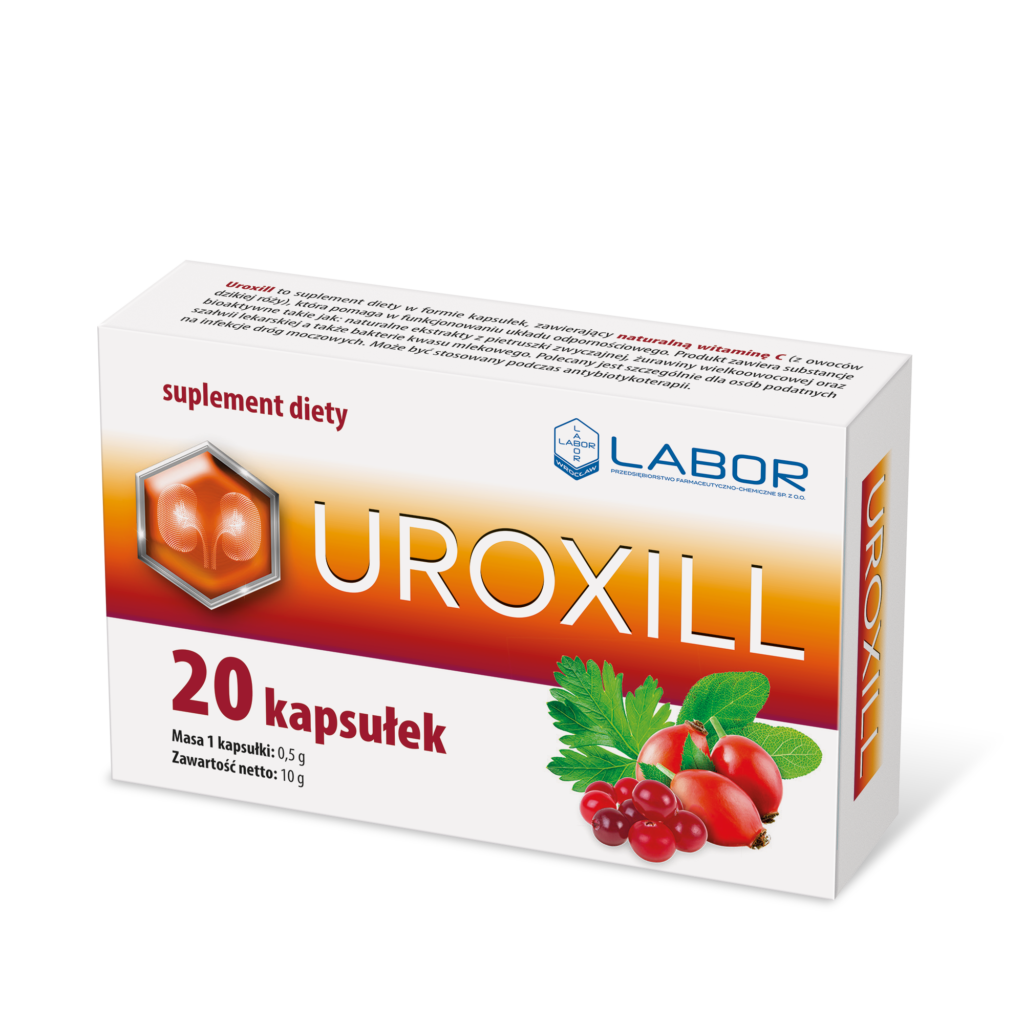What is recurrent cystitis?
Urinary tract infections are one of the most common infectious diseases. A urinary tract infection (UTI) is the presence of microbes in the urinary tract above the bladder sphincter. Depending on the course of the disease, the following are distinguished:
? acute cystitis in women,
? recurrent cystitis in women,
? uncomplicated acute cystitis in women,
? complicated UTIs,
? asymptomatic bacteriuria.
Recurrent infections of the urinary system are infections, most often of the urinary bladder, occurring repeatedly, often several times a year, being a great burden to life and causing often severe ailments.
What are the causes of recurrent cystitis?
Urinary tract infection is ten times more common in women than in men. This is largely due to differences in the anatomical structure of the urethra. Due to the proximity of the vagina and anus, microorganisms can easily enter the bladder, causing inflammation.
Infection with Escherichia coli (E. coli) is the most common cause of urinary tract infections. There are many strains of these bacteria that differ in their antigenic properties, structure and ability to adhere to the epithelium of the urinary tract, which makes them easier or more difficult to eliminate from the body by natural defense mechanisms. The development of urinary tract infection depends on the strength of bacteria adherence to the epithelium of the urinary tract and the efficiency of the body’s defenses. The urinary tract is protected against infection by a thin layer of mucopolysaccharides that covers the bladder mucosa, as well as urinary proteins such as uromodulin and immunoglobulins, which prevent bacteria from sticking to the epithelium of the urinary tract.
In many women, urinary tract infection, most often urinary bladder infection, occurs many times, often several times a year, being a great burden to life and the cause of often severe ailments. Microbes that are pathogenic to the urinary system can survive in the intestine for years after being eliminated from the urinary tract and cause recurrent urinary tract infections. In such cases, we are talking about recurrent urinary tract infection. The development of recurrent urinary tract infections may be influenced by factors contributing to the infection such as obstruction of urine outflow, nephrolithiasis, pregnancy, catheterization, certain systemic diseases (e.g. diabetes), the use of drugs that suppress the body’s resistance, and disruption of the body’s defenses. Recurrences of urinary tract infections occurring in women without conducive factors are associated with sexual activity, which facilitates the penetration of bacteria into the bladder, and with the destruction of the natural bacterial flora of the end of the urethra and vagina (e.g. by using spermicides), which protects against infection with bacteria dangerous to the urinary tract.
What are the symptoms of recurrent cystitis?
Recurrent cystitis is diagnosed on the basis of clinical symptoms such as pain and burning when urinating, pollakiuria, painful urge to urinate, sudden urge to urinate, difficulty holding up urine, lower abdominal pain, and laboratory findings. If a complicated urinary tract infection is not suspected and the urine culture shows a pathogen typical of an uncomplicated UTI, there is no need for imaging studies.
What are the treatments for recurrent cystitis?
Recurrent cystitis in young women is treated for several days, usually 3-7, an antibiotic recommended by a doctor on the basis of an antibiogram or effective in E. coli infection is used. The symptoms usually disappear within 1-3 days. If relapse occurs within 6 months, it is better to administer a different first line drug than the previous one. Treatment of relapses should be based on the urine culture result, but we use empirical treatment until a culture result is obtained. The duration of treatment is the same as for uncomplicated cystitis, except in diabetics, for whom treatment duration may be longer, such as 7-14 days. Some women diagnosed with recurrent urinary tract infection, with the presence of the same bacteria in the urine culture each time, may, upon consultation with their doctor, initiate treatment with the antibiotic that was used during the previous episode of the disease.
What are the methods of preventing recurrent cystitis?
In people suffering from recurrent urinary tract infection, in order to prevent recurrence of the disease, prevention is very important, consisting in drinking plenty of fluids over 3-4 liters a day, frequent micturitions (including before going to bed), avoiding constipation, drinking a glass of water before voiding after intercourse, proper personal hygiene, avoiding tight underwear, avoiding irrigation, changing the contraceptive used, especially avoiding spermicides. It is also helpful to use in the form of tablets, capsules, dissolving powder containing cranberry extract, which inhibits the adherence of bacteria to the urinary tract mucosa, oral or vaginal administration of Lactobacillus reuteri and Lactobacillus rhamnosus strains. The studies carried out on a group of women with recurrent cystitis prove that the simultaneous administration of cranberry, L. rhamnosus and vitamin C is a safe and effective option to prevent recurrences. According to other studies, the simultaneous administration of cranberry and propolis, which enhances the effect of cranberry, is also effective. In urological practice, other plant materials are also used, e.g. herb and parsley root. A properly selected set of plant raw materials is therefore an indispensable element supporting the treatment of urinary tract diseases. It positively influences not only the course of basic therapy, but also prevents the recurrence of inflammation.
Effective products supporting the treatment and preventing the recurrence of cystitis are:
Uroxill sachets containing, as active substances, extract of the fruit of large-fruited cranberry; rosehip extract; parsley leaf extract; thyme herb extract; propolis extract; sage leaf extract and a mixture of probiotic bacteria (min 5×10?? CFU / g): Lactobacillus acidophilus 15%, Lactobacillus rhamnosus 35%.

Uroxill capsules containing rosehip extract; parsley leaf extract; large-fruited cranberry fruit extract; sage leaf extract; mixture of probiotic bacteria (min 5×10?? CFU / g): Lactobacillus acidophilus 15%, Lactobacillus rhamnosus 35%,

AUTHOR: Dr n. farm. Andrzej Tarasiuk




